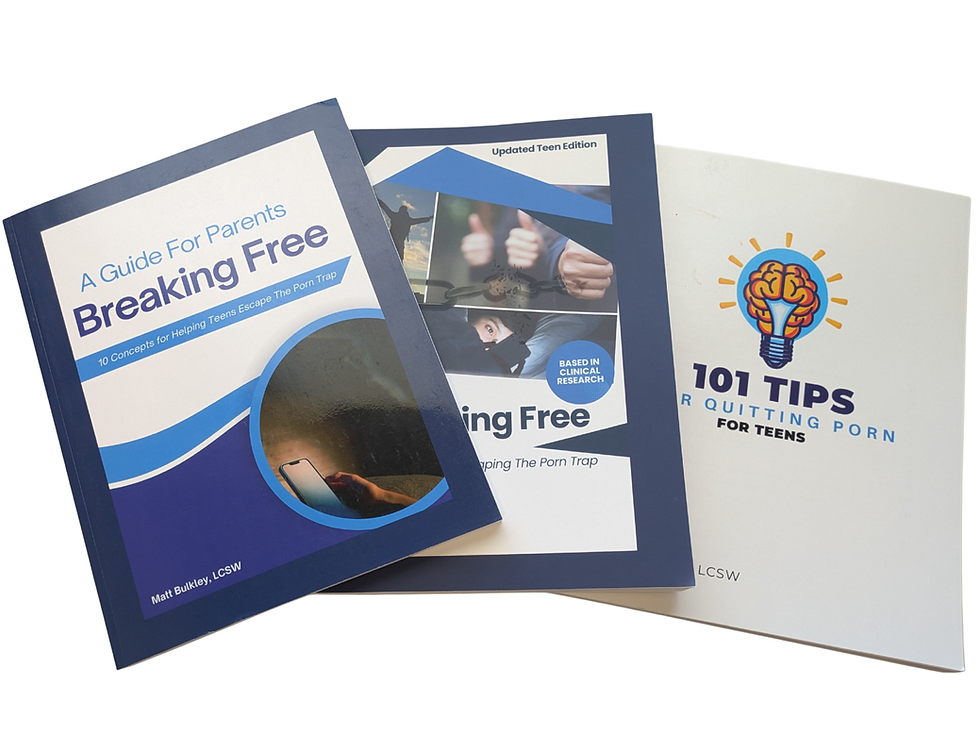Helping Your Teen Break Free from Pornography Addiction: The Power of Doodling
- Matt Bulkley

- Jun 18
- 3 min read
As a parent, watching your teen struggle with pornography addiction can feel overwhelming. You want to support them but may not know where to start. The good news? Simple, everyday actions—like doodling or drawing—can be a powerful tool to help your teen manage urges and stay on the path to recovery. In this blog post, we’ll explore why keeping their hands busy with a pencil and paper works, backed by science and expert insights, and share practical tips for you to guide your teen.
Why Doodling Helps Teens Overcome Pornography Addiction
When your teen feels the urge to watch pornography, their brain is craving a quick hit of dopamine—the “feel-good” chemical tied to the brain’s reward system. This is why breaking the habit can be so tough; their brain is wired to seek out what feels familiar and rewarding. But here’s where doodling comes in as a game-changer.
The Science Behind It
Research from psychology studies shows that engaging in hands-on activities like drawing can act as a distraction technique. When your teen picks up a pencil and starts sketching, their brain shifts its focus from the urge to relapse to the act of creating. This redirection reduces stress and weakens cravings by keeping their mind occupied with something positive.
Doodling isn’t just a random activity—it’s a way to “hack” the nervous system, as one addiction expert puts it. By giving the brain a new task, your teen can break the cycle of obsessive thoughts and avoid falling back into old habits. Plus, creating something on paper can boost their confidence and sense of accomplishment, replacing feelings of shame with pride.
What Experts Say
Therapists and counselors who work with teens struggling with addiction often recommend doodling as a practical strategy. In clinical settings, they’ve seen young people use simple sketching to dodge triggers—like stress, boredom, or tempting situations. It’s not just about keeping hands busy; it’s about giving the mind a healthy escape from those nagging urges.
How Your Teen Can Start Doodling to Stay on Track
Encouraging your teen to try doodling is a low-pressure way to help them build resilience against relapse. Here are some steps to get them started:
Keep Supplies Handy: Set up a small sketchbook and pencils in places where your teen spends time, like their bedroom or the living room. Make it easy for them to grab and doodle when an urge hits.
Start Simple: They don’t need to be an artist! Suggest basic shapes, patterns, or even random scribbles. The goal is to keep their hands and mind engaged, not to create a masterpiece.
Use It as a Trigger Response: Talk with your teen about recognizing their triggers (like being alone online or feeling stressed). Encourage them to reach for their sketchbook instead of their phone when those moments arise.
Celebrate Their Efforts: If they share their doodles with you, praise their creativity and effort. This can help them feel proud and motivated to keep going.
How You Can Support Your Teen
As a parent, your support is crucial in helping your teen navigate their recovery. Here are ways to guide them while fostering a positive environment:
Be Encouraging, Not Pushy: Suggest doodling as a fun, no-pressure activity rather than a “must-do” task. Let them explore it at their own pace.
Model the Behavior: Try doodling yourself during family time or when you’re stressed. This shows your teen that it’s a normal, helpful habit.
Create a Safe Space: Let your teen know they can talk to you about their struggles without judgment. Pairing doodling with open communication can make it even more effective.
Explore Other Tools: Doodling is just one strategy. Consider working with a therapist who specializes in addiction to create a broader plan tailored to your teen’s needs.
Why This Matters for Your Teen
Pornography addiction can leave teens feeling trapped in a cycle of shame and frustration. Doodling offers a simple, accessible way to interrupt that cycle and build healthier habits. It’s not a cure-all, but it’s a practical step that can empower your teen to take control of their choices.
By encouraging your teen to grab a pencil instead of giving in to temptation, you’re helping them discover their strength and creativity. Over time, these small victories can add up to lasting change.
Take the Next Step
Ready to help your teen try this out? Start by picking up a sketchbook and some pencils together—it could be a fun bonding moment. If you’re looking for more resources, consider reaching out to a counselor or checking out support groups for families dealing with addiction.
You’re not alone in this journey, and neither is your teen. With tools like doodling and your unwavering support, they can take meaningful steps toward a healthier, happier future.










Comments